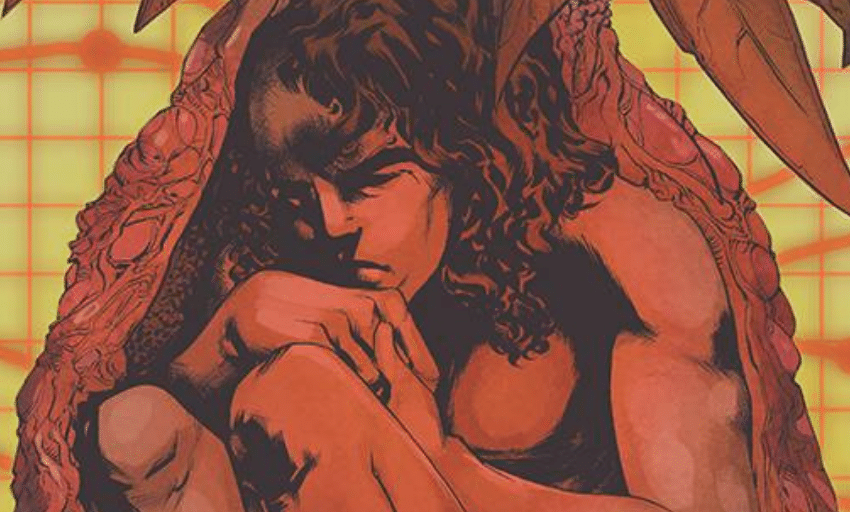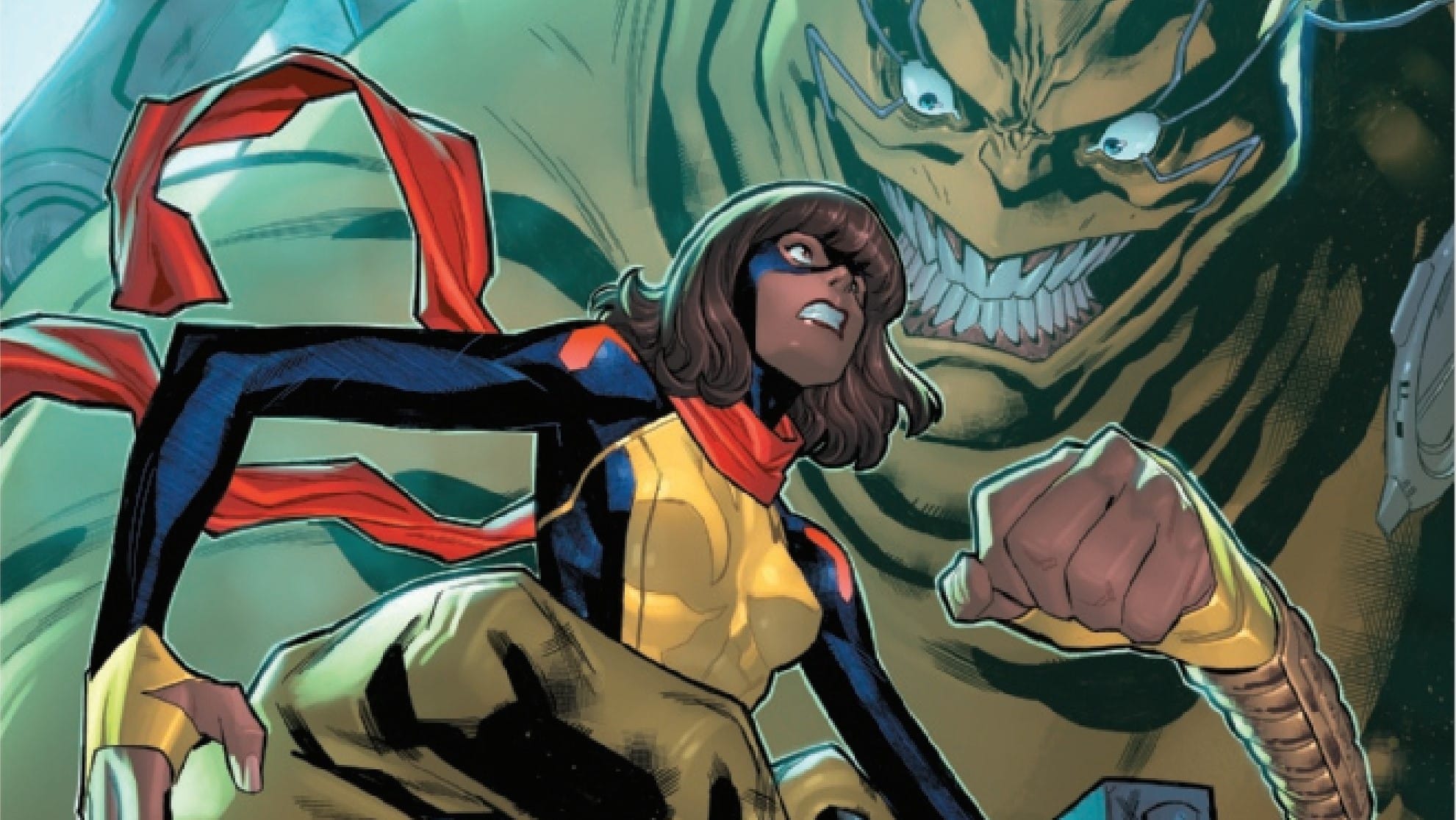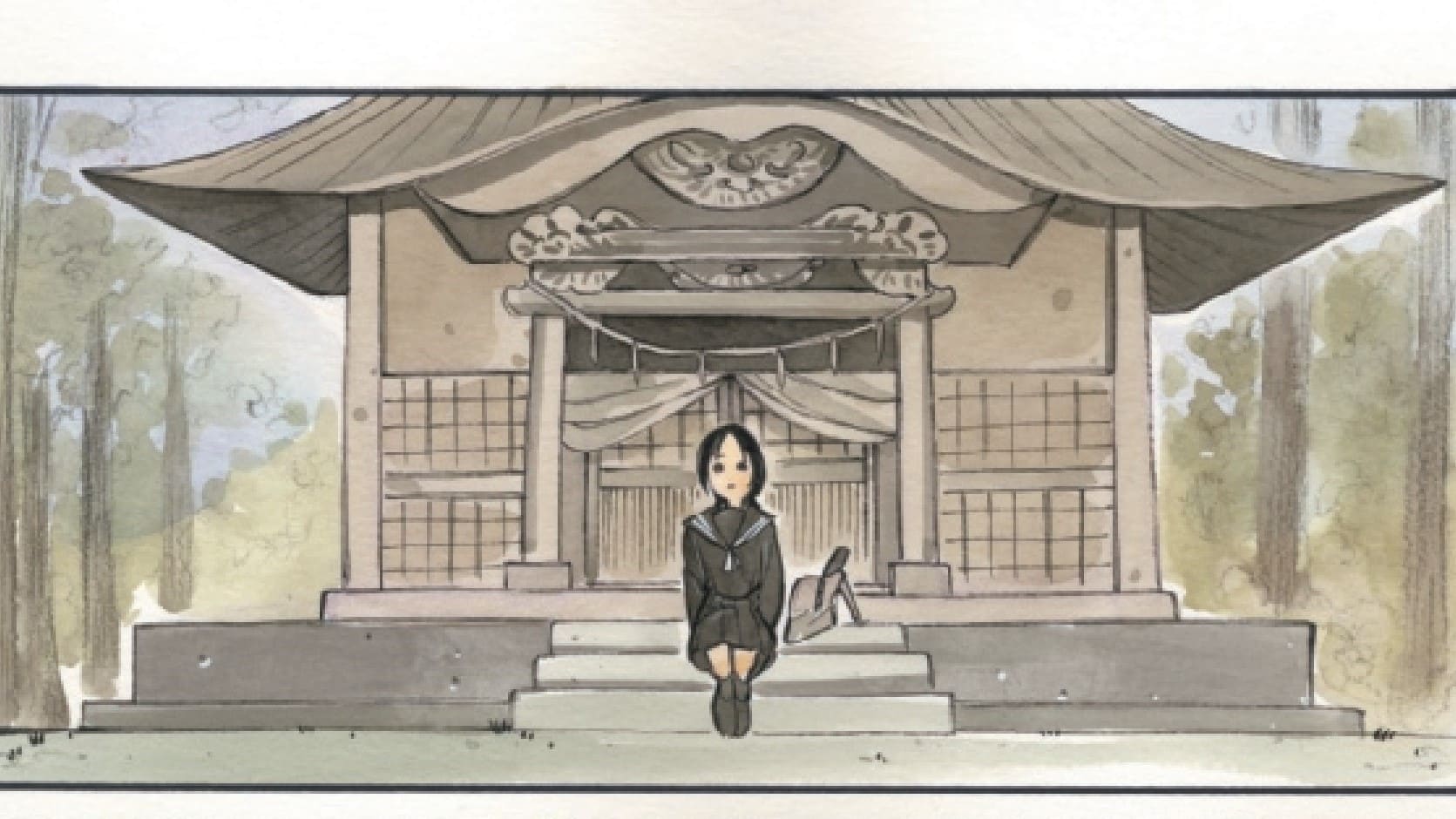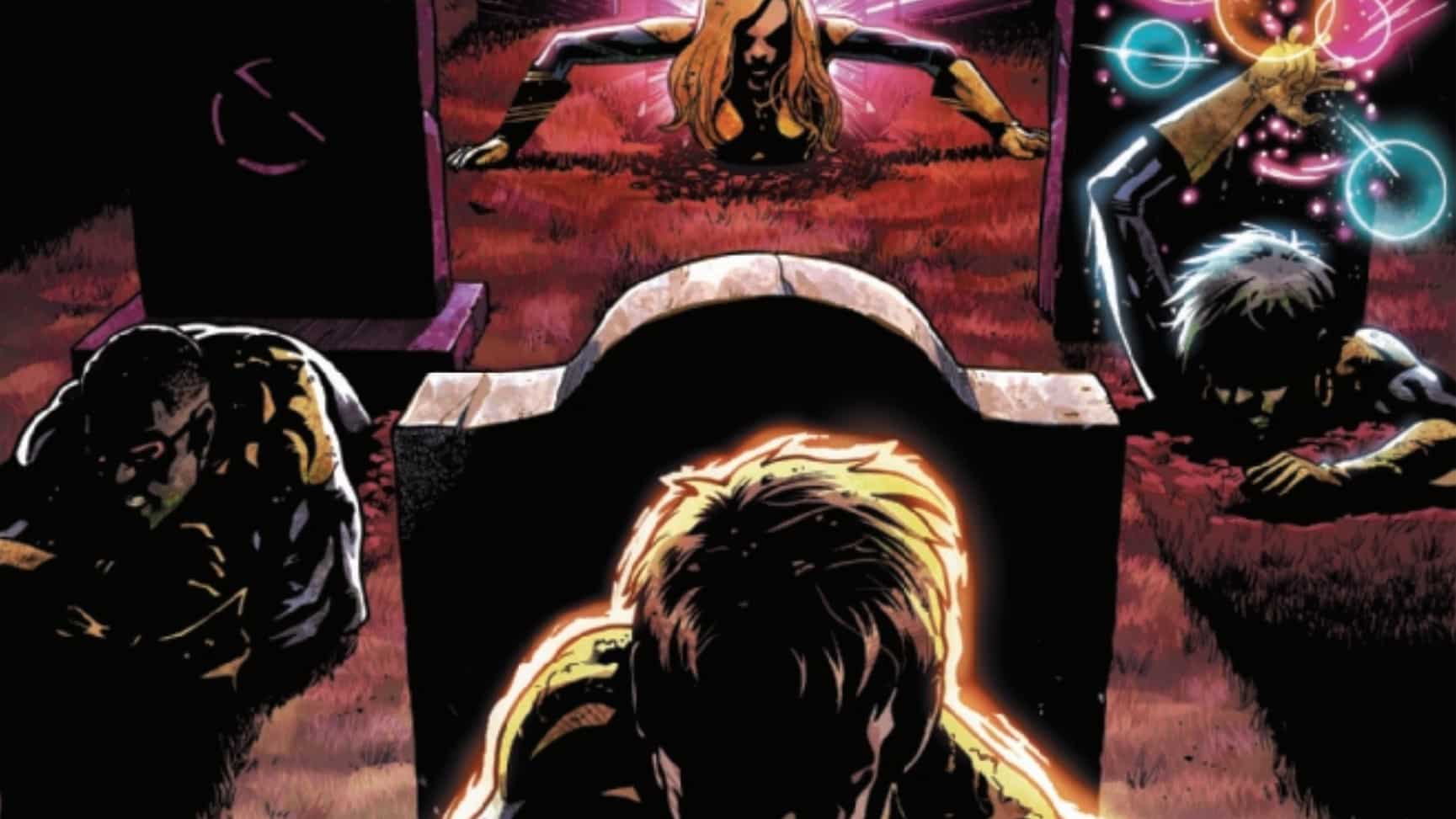As Anne architects a social media campaign of looming dread, she begins to doubt her actions and fear her co-workers. Locked in a terror-shrouded fortress of her own design, with nowhere left to run, Anne confronts the fury of a Fungal God long thought dead in I Breathed a Body #3 by Zac Thompson, Andy MacDonald, Triona Farrell and Hassan Otsmane-Elhaou.
CW: I Breathed a Body #3 features disturbing images of violence and self-harm.
Robert Secundus: When last we spoke about this series, I don’t think I’d ever seen the letters “NFT.” Between issues, a new technology where artists on the internet choose to do violence to the Earth for profit (and, really, for the speculation of the wealthy and powerful) has come to prominence. I don’t think we’ll be talking too much about that today, but I wanted to get that out there, that this series is so relevant to the actual stories we see rise up as it continues to be published.
Zachary Jenkins: What’s interesting is the self-centered nature of an NFT. Apart from the significant environmental impact of all cryptotechnology, the root action here is taking something, like a JPEG of a cat, that the internet excels in replicating and spreading, and walling that off so that you can know you are the only person who owns it. It’s trying to carve out your own capitalist piece of the mycelium lattice that is the internet, and there’s something inherently disturbing about that. If that core boon of the internet is the connection, what happens when you approach that from a selfish perspective?
Visions of A Mycelial World We Cannot See

RS: This issue takes a hard turn in genre that I didn’t expect but should have: We enter the world of the supernatural (or an aspect of the natural world that seems supernatural to us) and fantasy. Who is The First American? Who is the monstrous creature we saw in the opening issue? The thing we saw growing in interludes throughout these issues? How did the world get this way, and how did our evil CEO gain such power? We start to get our answers here.
The world of I Breathed A Body is kind of post-post-apocalyptic; war and strife led to the death of democracy and the rise of some kind of libertarian corporatist society. The most powerful man in the world, the man who controls the internet of the future and thus all information and mass culture, is a man who stepped out of society, into the wild, and then into something else. Bramwell entered something like what we’d call the world of the Fae, something that exists just to the left of, or behind, or under our reality, and gambled with a woman there, known by a symbol but called The First American. His ability to shape flesh, to create beings, create systems and, most importantly, create the mycelial network of the internet, all stems from this game of chance. Zack, I have a lot of thoughts and a lot of questions, but what did you think of this turn?
ZJ: The ascetics Thompson, MacDonald and Farrell set in the last two issues really sell this turn. This is a story about the future, but instead of a Blade Runner vibe, it has always had a more natural, almost druidic feeling. From that perspective, having Bramwell get the resources to make the super mushroom internet by tricking a fairy makes more sense than it should. Like all stories you could describe as “doing a Black Mirror,” this is a fable. It’s a tale you tell to convey a moral, in this case “Internet is maybe bad?” From that very reductive viewpoint, making it a supernatural story makes a ton of sense.
A lot of stories have tried to mix magic and technology. Some try to take the Arthur C. Clarke “Any sufficiently advanced technology is indistinguishable from magic” approach, but flattening it down to a boring thing where it just looks like magic. Even Kieron Gillen and Stephanie Hans’ Die has a character connected to Fae, but with a cyberpunk vibe. What we see here is different. It isn’t magic being something you can graft onto newfangled technology. This magic is old, it’s elemental, it is connected to the world itself. It cannot be forced into a new form, but technology, progress itself, has to be remade in the image of nature. This is a risky genre shift, what Dan Slott would call a “double mojo,” but the team here makes it work. I know you mentioned you had been trying to crack this type of story for a while, Rob. Why did this design of things land for you?
RS: Recently, I’ve been thinking about the Fae and the internet as parallels quite a lot. The Fae is wild, unruly, but also governed by rules and etiquette, much of which is hard for us to determine. It’s a place of both danger and wonder. These are all true of our virtual world as well, and they’d be far more true of Bramwell’s unregulated, decentralized vision of the internet.
But most importantly, it’s a place that foregrounds perspective and identity in interesting ways. It’s a place you can’t find on a map — it’s just out of your vision. It’s something you stumble into when looking elsewhere. It’s real but it’s not, in ordinary spaces, tangible, and once you’re inside you will find it difficult to navigate. And it’s a place (as we’ll discuss in more detail shortly) where giving your true name, as Bramwell does here, can have horrifying consequences. And one thing more — it’s a place of bargains, and bargains that typically do not go well for the human beings involved in the trade. Everything the series is playing with aligns nicely with that whole tradition, and so, for me, it was a fitting revelation. I wonder, though, what you think of the oddest detail here — what do you think of The First American, both the character and the title?
ZJ: As a character we don’t get a ton to her. In the flashback sequence she is an archetype, the otherworldly creature our protagonist must best in a contest of wits. She’s the Devil going down to Georgia or the jewelry-obsessed Stoor trading riddles in the dark. The difference here is that she is beaten by an evil man whose motives are still shrouded in mystery. Her rebirth (regrowth?) from the bloody remains of Mylo is a visual treat from MacDonald, and this is a fantastic introduction to a character who promises to be key to our endgame.
Her name, not her true name mind you, is curious to me. Frankly, the concept of The First American could mean any number of things depending on what Thompson and co. want to evoke. I’ll be interested to see how the different facets of her name are revealed. Do you have any ideas of the specifics the team is going for here?
RS: Not yet; throughout this series, since that phrase, “The First American,” was uttered, it’s felt so familiar. It reminds me of … something that has been on the tip of my tongue for months. I think the most important thing for us to learn is whether “America” in this context refers to the state or the land. Whether she comes into existence with the country of America or whether she is older will help us understand what the book is up to by giving her that name.
Call Me by Your Name

ZJ: One of the most fascinating things about this, and the element that formed the connective tissue between the Fae and the World Wide Web for me, is the emphasis on names, both hidden and true. The concept of names having power is ancient, stretching back to the earliest of human culture. To know a creature’s true name is to have power over its nature. The Tetragrammaton, unable to be spoken, is the true name of the Jewish G-d. In the same way, we hide behind screen names and pseudonyms on the internet. Doxxing is a real threat. Even in an age of social media dominance, there is information we keep hidden from the prying eyes of the internet. A practice that only increases when you build followers to your work and need to keep some small part of yourself private. Names have power.
RS: And sometimes pseudonyms don’t hide the person; sometimes the masks we wear are revelatory. We’re talking in really mythic terms here, but where we see this issue of names and identity most clearly is in the most grounded, least fantastical subplot in this issue, in our protagonist’s narration as she struggles with the person she’s become and the person she was — and she does so by emphasizing her different names, and the resulting difference between her personas. She’s Zoe or Anne; the difference is as extreme as A or Z. And we hear from Zoe and Anne both in this issue. What did you think of that narration and lettering trick, of giving these identities their own caption boxes with their own colors?
ZJ: I’ve criticized Hassan Otsmane-Elhaou’s lettering in this series, mostly because the hyperlink emphasis style doesn’t work for me, but in this sequence I think he is shining. It’s not a novel trick, but it’s one that works here because it emphasizes how these are two different facets of the same person. He interestingly uses the same color for Zoe’s caption boxes as he uses earlier in the issue for The First American’s highlights, drawing a subconscious connection between the two. You remember the pink because every other highlight in the series has been that sickly green. To have a call back so soon, right before Zoe meets the Fae? It hammers home their connection in a powerful way. Sometimes Otsmane-Elhaou gets too experimental for his own good, like in this issue where he obscures dialogue behind rain, but I’m glad to see him pushing the boundaries of lettering.
RS: And that moment when all the distinctions fall away, when she’s no longer at odds with herself, it seems, but has turned a point in the road back toward unity? The shift to coloring the boxes with both colors was such a simple, effective way of communicating that.
ZJ: The turn toward unity is likely the most healthy thing Anne has done in years, even as the rest of the series is spiraling toward disaster. In comics specifically, you are seeing many creators weigh the benefits of being online, in a world where they have to put on a mask, hide who they are and make themselves available for any fanboy who wants to yell at them over whatever nefarious deeds Poison Ivy is up to this week. Having some distance, some privacy, some united sense of self? It’s good. As people we can put on a facade for short times. I’m in sales, I know how to click on my customer voice and be jovial even when I’m having a horrible day, but it’s not healthy to be expected to keep that up 24/7. Anne may be the only character to come out of all this horror for the better. Unfortunately, we can’t say the same about Dalton.
Blood for the Blood God

ZJ: We talked about taboo, online violence the last time we chatted about this book, but this issue takes things a step further. In marketing communications, especially in social media marketing, the most critical part of your pitch is the call to action. It’s you pleading to your audience to do something. Like and subscribe. Use promo code MyBrother for 15% off your first purchase. Support us on Patreon. As this issue ends, Dalton, the ever loyal true believer, calls to the Mylo faithful to “give him your blood”. He spills his own intestines, advocating for 15 million viewers to do the same. Rob, we’ve had a lot of disturbing imagery thus far, but this felt more grounded, and more upsetting.
RS: Dalton is still somewhat of a mystery to me; because we adhere so tightly to Zoe/Anne’s perspective, we get glimpses of his relationships to Bramwell and Mylo, short windows into his emotional state and glimpses of some broader plot. The final scene was so jarring to me in part because the last time we saw him, he seemed to be attempting to escape and frustrate Bramwell’s designs. But here he seems to be moving them forward, continuing whatever ritual his boss hopes to enact.
But in general, this was always going to be more disturbing. No matter the context, self-harm is always more upsetting than harm against others. We can imagine any number of contexts in which harm against others is justified, is something we can defend or even celebrate. We cannot imagine self-harm as anything other than something deeply, deeply tragic. The narrative here too that Bramwell is hoping to inspire mass suicide is disturbing because it’s weird that this has not yet happened. Given the horrors of our modern world, given the parasocial power that so many jackasses and so many monsters wield, how have we managed to avoid this? How have we managed to avoid a Paul brother learning about the aftermath of Kurt Cobain’s death and deciding, “Oh, I could use this?”
ZJ: Taking it back to online advertising, impressions, getting eyeballs on content, are easy. The challenge is increasing what we call click-through rate, actually getting someone to do a thing. Having a click-through rate of less than 1% isn’t uncommon. It’s about gaining volume and finding the small few it connects to. The moment there is a cost, even a small cost, people lose attention. When that cost is life? It becomes very difficult to drive mass action.
It’s part of the connective tissue of all cults and mass conspiracy theories. The participants are constantly assaulted with impressions that confirm that the group, the theory, the lie is true. When you have so many constant, reinforcing impressions, statistically, something is finally going to break through. It’s hard to see Mylo as anything other than a cult of personality. He was a brand, a lifestyle, and even in death his followers crave more from him. This, I hope, is where the fiction breaks from reality. I have to believe that we are not being brainwashed into the kind of celebrity worship that could lead to giving up our lives for a lie. But then again, I’m not so sure after how this year started.
RS: We’re in a real dark place; so too is the story at this point. I think the question now is: Is any of this inevitable? Is this art, this ritual, now unstoppable? When we open next issue, will we be confronting a world on the path to self-destruction? If not — how? How do you fight an idea like this? How do you fight a fandom?
ZJ: You taint the subject of their affection.







